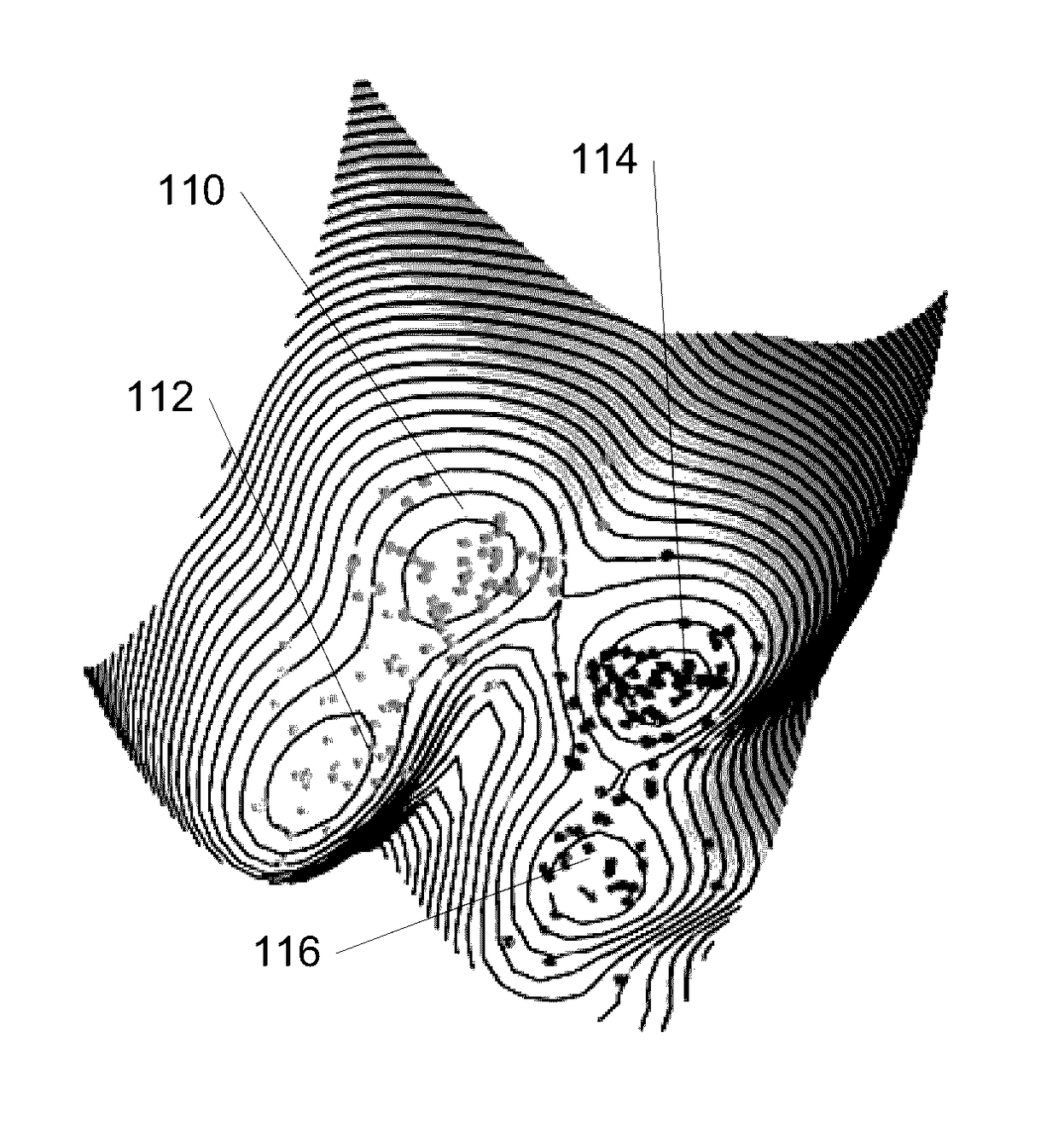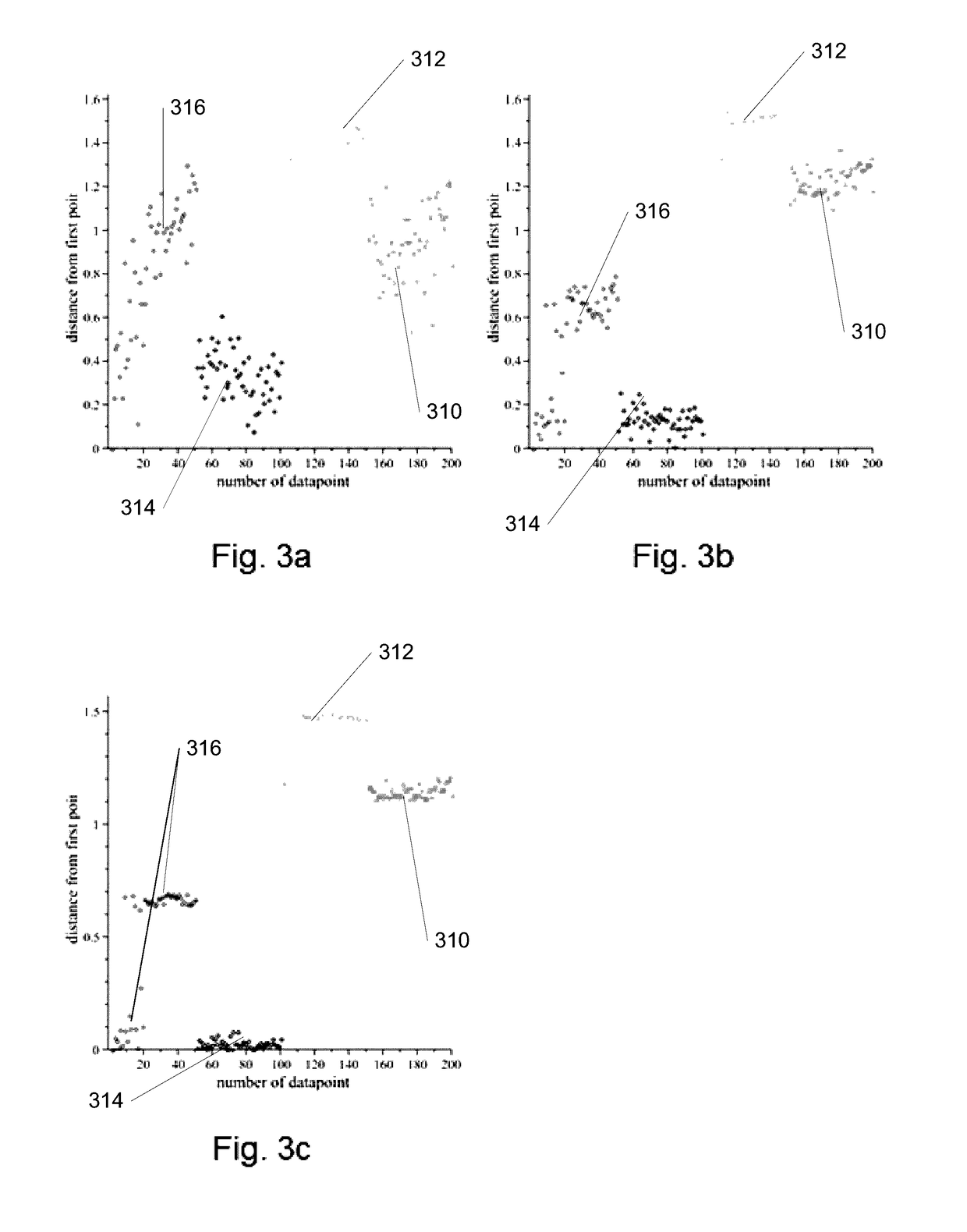Method for discovering relationships in data by dynamic quantum clustering
a dynamic quantum and data technology, applied in relational databases, database models, instruments, etc., can solve the problems of data clustering, data clustering is often ill-defined in a mathematical sense, and the performance of this quantum clustering approach can have an undetectable high sensitivity to the value of the quantum clustering scale parameter
- Summary
- Abstract
- Description
- Claims
- Application Information
AI Technical Summary
Problems solved by technology
Method used
Image
Examples
example
Ripley's Crab Data
[0044]To test our method we apply it to a five-dimensional dataset with two hundred entries, used in Ripley's text book (B. D. Ripley, “Pattern Recognition and Neural Networks”, Cambridge University Press, Cambridge UK, 1996, hereby incorporated by reference in its entirety). This dataset records five measurements made on male and female crabs that belong to two different species. This dataset has been used in the original paper on quantum clustering by Horn et al. cited above. It is being used here to allow readers to compare the two techniques. Applications to other data sets will be discussed below. Our main motivation is to provide a simple example that exhibits the details of the DQC method. In particular, we wish to show that the simplest computational scheme for implementing the general program captures the essential features of the problem and does as well as one can reasonably expect to do.
[0045]The data is stored in a matrix M which has 200 rows and 5 col...
PUM
 Login to View More
Login to View More Abstract
Description
Claims
Application Information
 Login to View More
Login to View More - R&D
- Intellectual Property
- Life Sciences
- Materials
- Tech Scout
- Unparalleled Data Quality
- Higher Quality Content
- 60% Fewer Hallucinations
Browse by: Latest US Patents, China's latest patents, Technical Efficacy Thesaurus, Application Domain, Technology Topic, Popular Technical Reports.
© 2025 PatSnap. All rights reserved.Legal|Privacy policy|Modern Slavery Act Transparency Statement|Sitemap|About US| Contact US: help@patsnap.com



